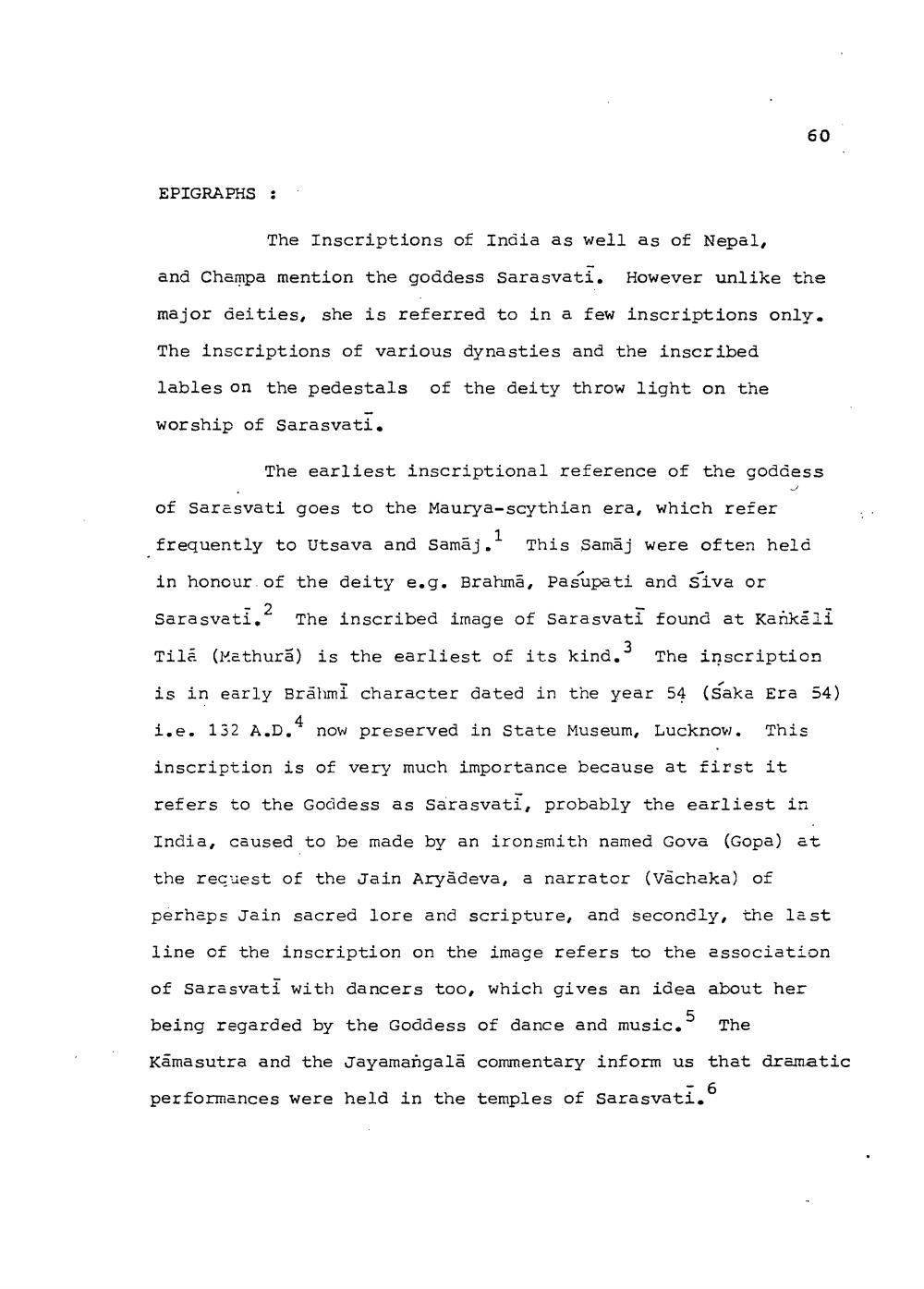________________
EPIGRAPHS ::
The Inscriptions of India as well as of Nepal,
and Champa mention the goddess Sarasvati. However unlike the
major deities, she is referred to in a few inscriptions only.
The inscriptions of various dynasties and the inscribed
lables on the pedestals of the deity throw light on the
worship of Sarasvati.
The earliest inscriptional reference of the goddess
of Sarasvati goes to the Maurya-scythian era, which refer
frequently to Utsava and Samāj.
This Samāj were often held
in honour of the deity e.g. Brahmā, Pasupati and Siva or Sarasvati.? The inscribed image of Sarasvati found at Karikáli Tila (Mathura) is the earliest of its kind.' The inscription
is in early Brāhmi character dated in the year 54 (saka Era 54)
i.e. 132 A.D.4 now preserved in State Museum, Lucknow. This inscription is of very much importance because at first it
refers to the Goddess as Sarasvati, probably the earliest in
India, caused to be made by an ironsmith named Gova (Gopa) at the recuest of the Jain Aryadeva, a narrator (vāchaka) of
perhaps Jain sacred lore and scripture, and secondly, the last
line of the inscription on the image refers to the association of Sarasvati with dancers too, which gives an idea about her being regarded by the Goddess of dance and music. The
Kamasutra and the Jayamangala commentary inform us that dramatic
performances were held in the temples of Sarasvati.'




